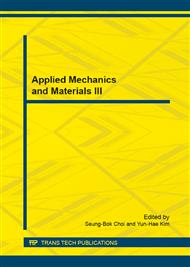p.732
p.737
p.742
p.747
p.752
p.757
p.763
p.769
p.774
Pyrolysis Characteristic of Nitrogen in Carbon Fibers during High-Temperature Heat Treatment
Abstract:
Pyrolysis mechanism of nitrogen in carbon fibers, heat-treated at various temperatures, was investigated, in relation to the nitrogen chemical bonding states. Nitrogen content shows exponential decreasing with increased temperature and extended time. The pyrolysis of nitrogen exhibited time-temperature equivalence. Nitrogen atoms containing hydrogen in the amorphous region and at the edge of microcrystalline, and the double-bonded nitrogen in pyridine rings are easily pyrolyzed, while nitrogen atoms in the six-member ring of the graphite sheets are difficult to be pyrolyzed.
Info:
Periodical:
Pages:
752-756
Citation:
Online since:
January 2015
Authors:
Keywords:
Price:
Сopyright:
© 2015 Trans Tech Publications Ltd. All Rights Reserved
Share:
Citation:


